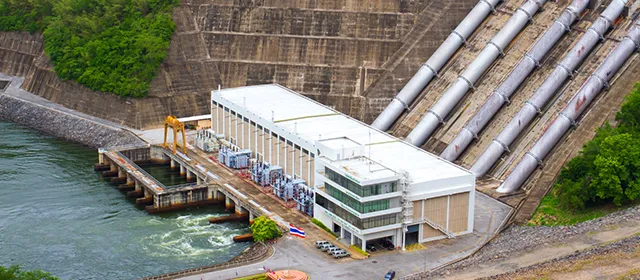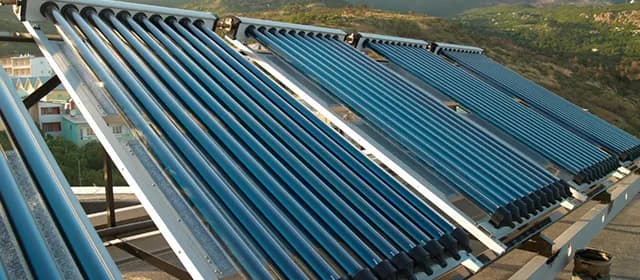Pumped hydro storage (PHS) is emerging as one of the most scalable and cost-effective solutions for energy storage, vital for achieving industrial sustainability goals and grid reliability. According to the U.S. Department of Energy (DOE), pumped hydro accounts for over 94% of global energy storage capacity, with more than 200 GW installed worldwide (Source: https://www.hydropower.org/). This immense capacity positions pumped hydro as a backbone for large-scale renewable integration and industrial energy strategies.
According to Kings Research, the global pumped hydro storage market is likely to generate a revenue of USD 89.27 billion by 2031. Industrial leaders are increasingly recognizing PHS not just as a renewable companion but as a strategic asset to manage energy costs, stabilize operations, and meet net-zero targets.
This blog delves into what pumped hydro storage is, why it matters now, the current global trends, its industrial applications, challenges, and future prospects.
What is Pumped Hydro Storage and How Does It Work?
Pumped hydro storage is a form of large-scale energy storage that works on a simple principle, storing excess electricity in the form of gravitational potential energy. During periods of low electricity demand or high renewable generation, excess energy pumps water from a lower reservoir to an upper reservoir. When demand rises, water is released back through turbines, generating electricity.
PHS is more than just energy storage. It offers grid balancing, frequency regulation, and capacity firming; all critical for industries relying on a consistent power supply. This ability to store vast amounts of energy makes it highly relevant for industries with fluctuating energy demands and sustainability commitments.
Why is Pumped Hydro Storage Gaining Industrial Attention Now?
Several factors are driving industrial interest in pumped hydro storage. Renewable energy integration is among the most significant drivers. As solar and wind generation grow, industrial consumers face volatility in power supply. Pumped hydro offers reliable energy buffering to smooth out fluctuations and ensure a stable power source. Grid stability is another major factor. Modern industrial facilities require constant power quality and stability, which PHS can deliver effectively.
Furthermore, energy cost management is becoming a pressing concern for large-scale industrial operations. By shifting energy usage from peak to off-peak hours, PHS helps reduce operational energy costs. Governments are also offering policy and regulatory support to encourage storage projects. For example, the International Renewable Energy Agency (IRENA) reports that total installed costs for renewable power decreased by more than 10% for all technologies between 2023 and 2024, making it more competitive (Source: https://www.irena.org/). These factors combined are placing pumped hydro storage squarely in the industrial spotlight.
Where is Pumped Hydro Storage Being Adopted Most?
Pumped hydro storage has a strong presence in regions with abundant topographical advantages and renewable energy targets. North America is a prime example, with the U.S. currently having 43 PSH plants with an estimated energy storage capacity of 553 gigawatt-hours.
Europe is another leader, with the European Commission highlighting PHS as a key driver in achieving a renewable-based energy transition.
In Asia-Pacific, countries such as China, Japan, and Australia are investing heavily in new pumped hydro projects to strengthen grid resilience and renewable integration.
For industrialists, these regions offer valuable case studies on how pumped hydro can be integrated into diverse energy infrastructures, from heavy manufacturing to data-intensive operations.
How Does Pumped Hydro Storage Impact Industrial Energy Strategies?
Pumped hydro storage helps industries increase reliability. PHS provides backup power during grid instability or outages so industries can keep running. This is critical for industries like manufacturing, chemical processing, and data centers, where downtime can be very costly.
Plus, PHS helps industries reduce energy costs. Storing low-cost off-peak power and using it during high-price peak periods can save a lot of operational energy expenses. Beyond cost savings, PHS supports sustainability goals by enabling more renewable energy penetration.
The U.S. DOE says industries that have implemented energy storage solutions, including PHS, have seen a reduction in energy costs over time. This combination of operational efficiency, cost savings, and sustainability makes PHS a good fit for industrial energy strategies.
Key Stakeholders in Pumped Hydro Storage Development
For industrialists exploring pumped hydro storage, it is crucial to understand the stakeholder ecosystem. Government agencies play a central role, setting policy frameworks, granting funding, and regulating safety standards. Utility companies operate pumped hydro facilities and integrate them into broader grid systems. Engineering and construction firms bring the expertise to design, build, and maintain these facilities.
Finally, industrial consumers are end-users who benefit directly from stored energy to power their operations. For industries, engaging with these stakeholders strategically can open opportunities for collaborations, shared investments, and long-term cost advantages.
Current Challenges for Pumped Hydro Storage
While pumped hydro storage has many benefits, there are several hurdles to overcome for industrial use.
High capital costs are a major issue, as building a pumped hydro facility requires a big upfront investment and a site with the right topography and water availability. Environmental concerns are another challenge, particularly around the creation of reservoirs and their impact on ecosystems.
Site limitations are another factor; not all locations have the elevation difference or hydrological conditions. Regulatory complexity is yet another obstacle, with permitting and compliance requirements that can delay projects.
The US Department of Energy’s Pumped Storage Hydropower Technology Strategy Assessment says that applications for permits and licenses for PHS projects have increased significantly in recent years, so regulatory hurdles are a big part of the problem.
How are Governments Supporting Pumped Hydro Storage?
Governments worldwide are increasingly recognizing pumped hydro as a key component of energy transition strategies and are actively promoting its adoption through policy support, grants, and incentives.
In the U.S., the DOE has launched funding programs for large-scale storage projects. The European Union’s renewable energy strategy includes pumped hydro as a priority, offering regulatory frameworks and financial incentives to promote its expansion.
In Australia, national energy storage targets incorporate PHS as a critical solution for renewable energy integration. These efforts make pumped hydro a viable option for industrial leaders looking to secure long-term, sustainable energy sources.
When Will Pumped Hydro Storage Become a Game-Changer for Industry?
While pumped hydro storage already plays a significant role in grid-scale energy storage, its full impact for industry is expected to unfold over the coming decade. The International Energy Agency (IEA) projects that global pumped hydro storage (PHS) capacity will increase by approximately 7% by 2030, reaching around 9 terawatt-hours (TWh) from new projects. This growth is part of the broader clean energy transition, which includes a significant expansion in renewable energy capacity. (Source: https://www.iea.org/).
This means that pumped hydro storage will become increasingly available, scalable, and cost-effective. Companies that invest in integrating PHS now are likely to gain a first-mover advantage in operational reliability, cost optimization, and sustainability.
Future Trends in Pumped Hydro Storage
Several emerging trends are shaping the future of pumped hydro storage. Hybrid energy storage systems are gaining traction, combining PHS with batteries or hydrogen storage for increased flexibility. Small-scale pumped hydro is also developing, allowing industrial campuses or isolated sites to have dedicated storage solutions. Digitalization is enhancing efficiency, with AI and IoT optimizing operations and predictive maintenance. Furthermore, the circular economy approach is influencing construction, with more projects focusing on reusing materials for reservoirs and turbines. For industries, early adoption of these innovations could deliver substantial benefits in efficiency, reliability, and cost control.
How Should Industrialists Approach Pumped Hydro Storage Investments?
Industrial leaders considering pumped hydro storage need a strategic and informed approach. Feasibility studies must evaluate site potential, environmental impact, and financial viability before committing to a project. Strategic collaborations with utilities, government bodies, and engineering firms can improve efficiency and risk management.
Long-term planning is essential; integrating PHS into corporate sustainability and energy security strategies ensures maximum value. Risk assessment, covering regulatory, environmental, and operational factors, is crucial for avoiding delays and maximizing returns. The U.S. DOE notes that early involvement in storage projects can yield significant operational cost reductions and resilience benefits.
Case Study: Bath County Pumped Storage Station, USA
The Bath County Pumped Storage Station in Virginia, USA, is one of the most successful examples of pumped hydro storage integrated into an industrial and grid-scale ecosystem. Operated by Dominion Energy, this facility has a generating capacity of 3,003 MW, making it the largest pumped hydro storage station in the world. The project demonstrates how PHS can support grid stability while offering industrial-scale benefits. By storing excess energy during low demand and releasing it during peak demand, the Bath County station helps stabilize electricity prices and supports reliability for industrial consumers. Moreover, it has significantly reduced dependence on fossil fuels for peak power supply, aligning with sustainability goals. (Source: https://www.dominionenergy.com/)
For industrial leaders, Bath County serves as a model for how strategic PHS deployment can balance operational needs, environmental stewardship, and economic benefits.
Final Thoughts
Pumped hydro storage is more than an energy solution; it is a strategic asset for industries aiming to achieve resilience, sustainability, and cost-efficiency in a volatile energy landscape. With government support growing, technology evolving, and renewable penetration increasing, PHS will play an even larger role in the industrial energy sector in the coming decade. For industrialists, understanding the technology, engaging with stakeholders, and planning early will ensure they reap the benefits of this powerful energy storage solution and secure a competitive edge in the clean energy future.




